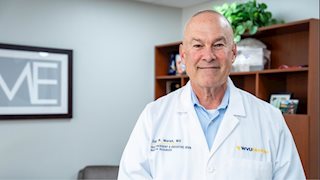
Some point to educational degrees, work titles, salary, organizational size, followers on social media, family, prowess of their children, bank account, physical appearance, exclusive memberships, awards and trophies, and social circles, to name a few examples.
It is puzzling, then, that while we are the richest, most successful economic country in the history of the world, many of our citizens feel hopeless, burned out, depressed, and anxious. In fact, Nobel laureate Sir Angus Deaton and Professor Ann Case coined the term “deaths of despair and hopelessness” to describe a large number of deaths in a group of non-Hispanic white Americans with high school graduation levels or less that were dying of suicide, overdose or alcohol-related liver disease. Before the COVID-19 pandemic, this group of Americans died in sufficient numbers to reduce the lifespan of citizens in our country for the first time since the world wars.
This subjective perception of despair and hopelessness is also capturing young people in our country. Former Surgeon General Vivek Murthy called the growing challenge of social isolation and loneliness the biggest epidemic health problem in the US. This issue is particularly challenging in younger Americans, with over 61% of 18–25-year-olds reporting feeling lonely. In a recent Harvard poll, only 17% of Americans aged 18-29 years old felt strongly connected to a community. Feeling connected was more common in those with college degrees and those living in urban/suburban settings versus those in rural areas. Belonging, being loved and valued, sharing family and community, and having meaning to one’s life is an infinite set of experiences.
In addition to feeling lonely and isolated, America leads the world in chronic diseases and obesity, and spends twice as much per capita on health care as the average Western country. We are burdened by the chronic disease (dis-ease) burden we face. How do we make any sort of change with this set of challenges?
One potential solution is to realize we are applying finite thinking and behavior to reach infinite goals.
His Holiness the Dalai Lama teaches that the way to joy and fulfillment is in the recognition of the deep connection between all people and all things and in selflessly serving others.
Infinite actions and thinking.
People in the Blue Zones, the five places in the world where people live extremely long and well – Okinawa, Japan; Ikiria, Greece; Sardinia, Italy; the Nicoya Coast of Costa Rica; and Loma Linda, CA – found joy in simple purpose, deep connection to others, and stable groups of lifelong friends.
Other longitudinal studies that followed participants into healthy lives in their 80s and 90s also found the most important predictors of a healthy lifespan are: strength of social connections and community; maintenance of purpose; and a growth/abundance mindset.
Infinite drivers of a healthy and long life.
Our need for social connection and community goes back to evolutionary times. Robin Dunbar, a famous anthropologist, coined his famous “Dunbar’s number” of 150, which is about the largest size of a tribe, small enough to feed each other and big enough to defend each other. This number has survived to today, where 150 people is about the largest group that we can individually really know.
Being separated from one’s community meant sure death, and thus, the perception of social isolation causes anxiety and activates our survival mechanisms. Vivek Murthy reveals that chronically experiencing social isolation and loneliness reduces lifespan by up to 15 years, the equivalent of smoking a pack of cigarettes a day for 15 years.
Feeling connected to others and to a community that loves and values you are critical factors to one’s long-term health and well-being. It allows us to feel safe.
An infinite perspective.
Google also assessed its best-performing teams for the secrets to their success. They measured a litany of attributes and found that one stood out from the rest: high degrees of psychological safety defined their most productive teams. The famous psychologist Abraham Maslow, in framing the hierarchy of human needs, notes that safety – psychological and physical – is a foundational need of humans.
Our need for a driving purpose in our life connects to our need to exist. Existentially, we cannot understand our identity or true reason for being. However, at the individual human frame, we all need a reason to get up in the morning and face each day. This is our purpose. Most of us find this in our jobs or organizations with which we belong, like churches or volunteer groups.
Importantly, education to prepare us for the jobs we are qualified to do is a critical success factor for a long and happy life. According to national death data, when comparing a person in America with a four-year college degree to a person with a high-school degree or less, there is an average 11-year projected life-span difference.
The benefit of purpose also applies to us in our older years. In elders, taking care of a pet or even caring for a plant has positive benefits of deepened social connection, augments purpose, and reduces social isolation and loneliness.
Maintaining a strong sense of purpose is an infinite perspective.
The last issue of a growth/abundant mindset, including being grateful and seeing the world through the eyes of abundance, has a dramatic positive impact on longevity and health. For example, in a study of 58 mothers in San Francisco who were on average 38 years old, highly educated, and who had high standards of living, investigators found that women who saw their lives as most highly and chronically stressful aged biologically 9 to 17 years more than peers with the lowest levels of chronic stress. The biological age calculation used telomere length (the shorter the telomeres, the older the cellular or biological age) to assess biological age.
This data suggests that how we see the world and ourselves in it can enhance our health and lifespan or reduce them. For example, people surviving life-threatening illness often report more happiness and joy than those who win the lottery.
It is our choice for how we see the world.
Experiencing the world in the current moment without the incessant distracting chatter of our inner thoughts and voice is an infinite state. I love the play on words that the existential parts of us are NOWHERE – Now and Here.
The infinite qualities of being truly present, connected, belonging, purposeful, grateful, joyful, fulfilled, and safe give us the best opportunity to live a life that is long and healthy.
It is through these infinite traits that we live the life of our dreams.
We do this by embracing the infinite opportunities we have every day to be kind, compassionate, loving, inclusive, serving, and loving others and ourselves despite our and their perceived imperfections and limitations.
Like the Sufi poet and philosopher Rumi said, “Yesterday I was clever, so I wanted to change the world. Today I am wise, so I am changing myself.”

